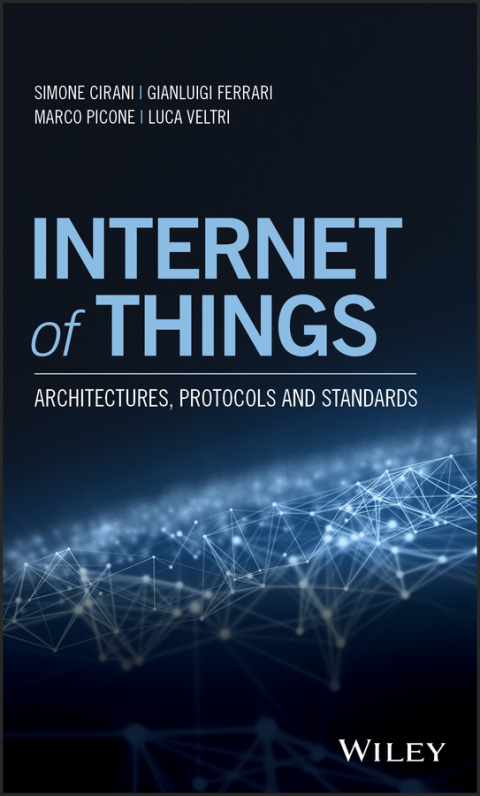Description
Efnisyfirlit
- Cover
- Dedication
- Preface
- Chapter 1: Preliminaries, Motivation, and Related Work
- 1.1 What is the Internet of Things?
- 1.2 Wireless Ad‐hoc and Sensor Networks: The Ancestors without IP
- 1.3 IoT‐enabled Applications
- Chapter 2: Standards
- 2.1 “Traditional” Internet Review
- 2.2 The Internet of Things
- 2.3 The Industrial IoT
- Chapter 3: Interoperability
- 3.1 Applications in the IoT
- 3.2 The Verticals: Cloud‐based Solutions
- 3.3 REST Architectures: The Web of Things
- 3.4 The Web of Things
- 3.5 Messaging Queues and Publish/Subscribe Communications
- 3.6 Session Initiation for the IoT
- 3.7 Performance Evaluation
- 3.8 Optimized Communications: the Dual‐network Management Protocol
- 3.9 Discoverability in Constrained Environments
- 3.10 Data Formats: Media Types for Sensor Markup Language
- Chapter 4: Discoverability
- 4.1 Service and Resource Discovery
- 4.2 Local and Large‐scale Service Discovery
- 4.3 Scalable and Self‐configuring Architecture for Service Discovery in the IoT
- 4.4 Lightweight Service Discovery in Low‐power IoT Networks
- 4.5 Implementation Results
- Chapter 5: Security and Privacy in the IoT
- 5.1 Security Issues in the IoT
- 5.2 Security Mechanisms Overview
- 5.3 Privacy Issues in the IoT
- Chapter 6: Cloud and Fog Computing for the IoT
- 6.1 Cloud Computing
- 6.2 Big Data Processing Pattern
- 6.3 Big Stream
- 6.4 Big Stream and Security
- 6.5 Fog Computing and the IoT
- 6.6 The Role of the IoT Hub
- Chapter 7: The IoT in Practice
- 7.1 Hardware for the IoT
- 7.2 Software for the IoT
- 7.3 Vision and Architecture of a Testbed for the Web of Things
- 7.4 Wearable Computing for the IoT: Interaction Patterns with Smart Objects in RESTful Environments
- 7.5 Effective Authorization for the Web of Things
- References
- Index
- End User License Agreement





